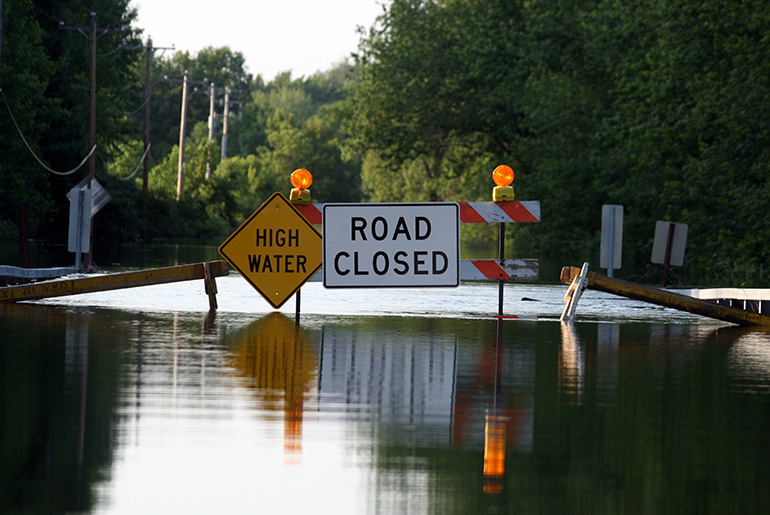
Dr. Ali Mostafavi, a researcher at the Texas A&M Engineering Experiment Station (TEES) and assistant professor with the Zachry Department of Civil Engineering at Texas A&M University, has been awarded a $2 million research grant by the National Science Foundation (NSF) Critical Resilient Interdependent Infrastructure Systems and Processes (CRISP) program. CRISP enables response to national critical infrastructure resilience needs while increasingly focusing on interdisciplinary research.
Mostafavi is also a faculty fellow at the Texas A&M Institute for Sustainable Communities and will lead a multidisciplinary team of researchers that includes: Dr. Phillip Berke, professor in the Department of Landscape Architecture and Urban Planning at Texas A&M and director of the institute; Dr. Sierra Woodruff, assistant professor in the Department of Landscape Architecture and Urban Planning; Dr. Arnold Vedlitz, professor and holder of the Bob Bullock Chair in Government and Public Policy at the Texas A&M Bush School of Government and Public Service; and Dr. Bjorn Birgisson, professor in the Texas A&M civil engineering department.
The project builds upon an infrastructure resilience research program that Mostafavi established within the Texas A&M Department of Civil Engineering to identify interdependencies between critical infrastructure systems using complex networks and “system-of-systems” models.
The team will be investigating how human and physical networks interact and how those interactions impact critical infrastructure performance in relation to flooding. Networks, in this case, is a broad term for groups of organizations or infrastructure and their interactions. An example is the network of organizations involved with hazard mitigation and resilience planning, or the interconnected flood control channels and bayous.
“In this project, what we aim to do is understand, through dynamic network modeling, the complex interactions among stakeholder networks, network of plans and physical infrastructure networks that affect flood vulnerability and resilience,” Mostafavi said. “We will see how the properties of stakeholder networks influence the level of integration among the network of local and regional plans, and ultimately influence vulnerability of physical infrastructure networks.
“Our network approach will help us answer questions such as who coordinates with whom for hazard mitigation and flood resilience planning? Who manages what infrastructure? Who develops what plans? What plans affect what infrastructure? What roads get flooded if a specific bayou fails? The problem of flooding is very complex with various interconnected physical systems and organizations. We cannot identify and implement effective engineering and public policy solutions unless we understand and improve these complex network interactions.”
The project will use Harris County as the test bed and currently available data from Hurricane Harvey for testing the research methods. The project will provide a better actionable science, which in turn will help inform public policy decisions to create a stronger level of national infrastructure resilience.
Another exciting and impactful aspect of this project is the deep engagement with stakeholders in Harris County.
“We have a noteworthy study advisory committee with individuals from the Harris County Flood Control District, City of Houston, U.S. Army Corps of Engineers and the Texas Department of Transportation,” Mostafavi said. “Continuing upon those strong relationships, we’ll now be able to look at how all these networks are interacting together simultaneously and use that information to translate these findings into actionable science-based policy recommendations for these communities to improve infrastructure resilience from flooding.”
According to Mostafavi, once methodologies and policies have been developed because of the team’s findings, they will be shared with stakeholders across the nation. The goal is to disseminate the findings to inform policy decisions, not only for municipal governments, but also at the national level. For example, in collaboration with Berke, they will employ a resilience scorecard for communities to evaluate their resilience and hazard mitigation plans which would account for infrastructure interdependencies to reduce physical vulnerability from flooding events.
Mostafavi, who has already done federally-funded infrastructure resiliency studies in the aftermath of Hurricane Harvey through NSF Rapid Response Research (RAPID) grants, said he is excited about the larger impact this research will have on these communities.
“My previous work has led to a significant impact, in terms of discoveries and methods, and will continue to do so with this project,” he said. “But I am most looking forward to see immediate and long-term impacts on these Harris County communities we have been partnering with in the aftermath of Harvey.”
